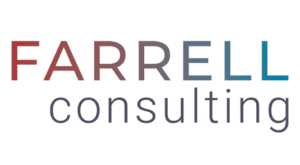Strategic Action: How Strategic Action Builds Change Capacity
Note: this is a four-part series. Read Part 1 | Part 2 | Part 4
by Patrick Farrell and Katherine Sanders
INTRODUCTION
Organizational capacity for change is the overall capability of an organization to either effectively prepare for or respond to an unpredictable environment (Saylor Academy, 2012). We’d add that change capacity is also accepting the challenge and responsibility of intentionally helping to shape our future environment.
Our previous posts explain why we need to take strategic action and how to get started. These first steps will eventually build capacity for your group to act on the “big ideas” of your plan.
BUILDING CAPACITY FOR BIG IDEAS
Strategic action is an opportunity to learn by doing. As our people plan and implement smaller changes, there will be some successes to celebrate and failures to learn from. This is the iterative process of building capacity for future change. Clearly, we need a shared view of the future that encourages us to take on the ‘next’ challenge.
As we set up processes and move forward with smaller initiatives, change capacity is building. Here are some of the ways organizations grow capacity and we can all see that it is growing:
• Communication (in multiple directions) is improving
• More change-leaders are emerging and gaining skills
• Momentum is building
• Trust is increasing
These attributes aren’t only indicators of growth, they are growth. They enable change in the organization.
Visibility is important. Our people are seeing evidence of plans moving to reality. Even if the changes haven’t reached their unit yet, they’ve heard through multiple channels about what’s happening, with whom, and why.
IT’S HELPFUL THAT CHANGE IS UNEVEN ACROSS AN ORGANIZATION
The change process is non-linear and can seem somewhat chaotic. People’s enthusiasm and engagement will vary across the organization. It’s normal for groups to be moving at different rates and from different starting points. One way this non-uniform movement can be helpful is to normalize it: use your communication processes to let people hear their colleagues’ impatience and excitement and occasional frustration. People can prod each other, encourage and support each other.
Timing also influences group’s and individual’s readiness to engage. We need to honor the work rhythms of the organization. Try to make it easy for your people to engage. Some groups will have different schedules than others. The trick here is to help the groups overlap in some intentional ways, so they can hear each other.
PEOPLE NEED TO OWN THE CHANGES
The more ambitious the change project, the more important it will be for people to take ownership of the ideas. They are the people who will be implementing them and living the new reality. We may need time and multiple opportunities to evolve the ideas and see how they might be implemented and acted upon in each part of the organization.
Some might imagine that an organization with a great deal of change capacity is a well-oiled machine effortlessly accomplishing major initiatives with no disagreement or challenges. We’d say that isn’t the vision we’re holding. We see an organization with high change capacity as a rather noisy place. Many ideas are raised and discussed, and those that are most constructive are acted upon. This organization’s people understand its major issues and seek open discussion with diverse voices. At their best, our people know how to hear those voices, hold our expectations at heart, and make the best choices we can in the moment.
The role of the leader is key in this development process. We’ll say more about the role of the leader in the next post.
FOR MORE INFORMATION
Sanders Consulting and Farrell Consulting specialize in helping teams implement change in higher education.





Leave a Reply
Want to join the discussion?Feel free to contribute!